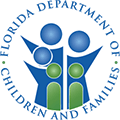Fear is a normal and healthy response to a dangerous situation. However, sometimes people in relatively safe situations experience fear responses that are out of proportion to the environment around them. When a person’s fear response is directed towards a future threat and is out of proportion to the size or intensity of the threat, that person may be experiencing an anxiety disorder.
Understanding Anxiety Disorders
Learn about different types of anxiety disorders
There are a number of different types of anxiety disorders, the most common of which are described below:
A specific phobia occurs when a person experiences strong fear responses to a specific stimulus, such as snakes, elevators, flying, enclosed spaces, spiders, heights, and many other stimuli.
Social anxiety disorder is a persistent fear of social situations. People who experience social anxiety disorder desire relationships with others but are often afraid of being viewed negatively, of speaking in front of others, or of being in unfamiliar environments. While many people do not enjoy these circumstances, people with social anxiety disorder avoid these situations, and others like them, in a way that significantly interferes with their everyday lives.
Panic disorder involves intense experiences of strong fear responses. This disorder involves experiencing panic attacks, which are short, intense bouts of extreme physiological activation. During a panic attack, a person may feel as though he or she is having a heart attack. Symptoms of a panic attack can include racing heart, sweating, shaking, butterflies in the stomach, difficulty breathing, fear of losing control, and sensations of rapid body temperature changes. Panic attacks often seemingly happen at random.
Generalized anxiety disorder (GAD) is a feeling of anxiety throughout the day that is not tied to any particular situation. People with GAD experience anxiety symptoms, such as restlessness, fatigue, difficulty concentrating, irritability, muscle tension, and sleep disturbance, and these symptoms significantly interfere with their ability to manage their day-to-day lives. Thankfully, people struggling with anxiety can seek treatment and regain control of their lives.
Statistics
Anxiety Statistics
Anxiety disorders are some of the most commonly diagnosed disorders. Approximately 20 percent of people in the U.S. are diagnosed with an anxiety disorder in a given year, and nearly 30 percent of people will suffer from some kind of anxiety disorder during their lives. Women are almost two-thirds more likely than men to be diagnosed with anxiety disorders. Unfortunately, only slightly more than one-third of people diagnosed with anxiety disorders are receiving treatment.
Causes & Risks
Causes and Risk Factors for Anxiety
There are many different reasons someone may develop an anxiety disorder, including both genetic and environmental factors.
Genetic: Current anxiety research suggests a strong genetic link in anxiety disorders. People with relatives who have anxiety disorders are themselves much more likely to develop an anxiety disorder. Although growing up in a high-anxiety environment can increase the chance of a person developing an anxiety disorder, studies of twins suggest there is also a genetic influence. One study found that if one identical twin had an anxiety disorder, the other identical twin had a 41% chance of having an anxiety disorder as well. Among non-identical (fraternal) twins, only 4% had an anxiety disorder alongside their siblings.
Environmental: Growing up in a high-anxiety environment can increase a person’s likelihood of developing an anxiety disorder. Experiences such as trauma or abuse, life-threatening situations, death of a parent, smoking, and drug use can all contribute to the development of an anxiety disorder. Certain medications can also have side effects that resemble anxiety disorders.
Risk Factors:
- Having biological relatives with anxiety disorders
- Exposure to life-threatening situations, traumatic events, or chronic stress
- Maltreatment, abandonment, neglect, or parental absence during childhood
- Low socioeconomic status
- Lack of social support network
- Drug use
- Being female
- Personality type
Signs & Symptoms
Signs and Symptoms of Anxiety
The signs and symptoms of anxiety disorders vary depending on which disorder a person is suffering from. The following are symptoms that may infer that a person is suffering from an anxiety disorder:
Behavioral symptoms:
- Avoidance of certain situations
- Repetitive or ritualistic behaviors
- Restlessness/pacing
- Exaggerated startle response
- Rapid speech
- Excessive alertness to the environment
Physical symptoms:
- Shaking/tremors
- Racing heart
- “Butterflies in the stomach”
- Sweating
- Reduced appetite
- Trouble sleeping
- Dizziness
- Shortness of breath
Cognitive symptoms:
- Poor memory
- Difficulty making decisions
- Trouble focusing
- Distractibility
Psychosocial symptoms:
- Withdrawal from social contact
- Rapid emotional changes
- Feeling uneasy or irritable; having a sense of foreboding
- Poor work performance
Effects
Effects of Anxiety
If left untreated, anxiety disorders can negatively affect sufferers’ lives in many different ways. These negative effects may include:
- Social withdrawal and strain on, or loss of, relationships
- Poor job performance and loss of employment
- Substance abuse
- Suicidal ideation and attempts
Co-Occurring Disorders
Anxiety & Co-Occurring Disorders
It is not uncommon for someone who has an anxiety disorder to also suffer from other disorders. These can include:
- Depressive disorders
- Bipolar disorder
- Personality disorders
- Schizophrenia
- Sexual disorders
- Attention-deficit/hyperactivity disorder












